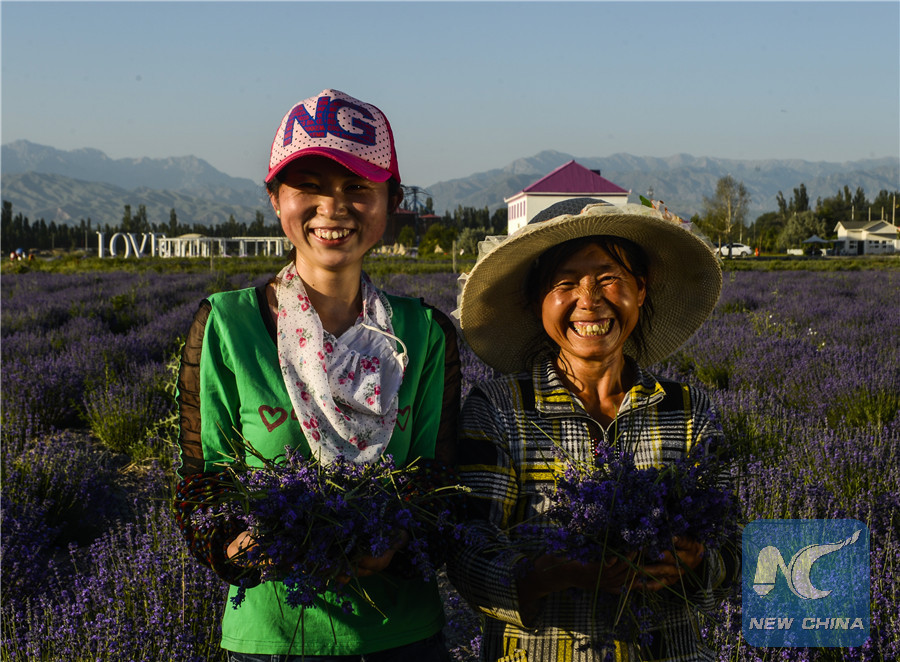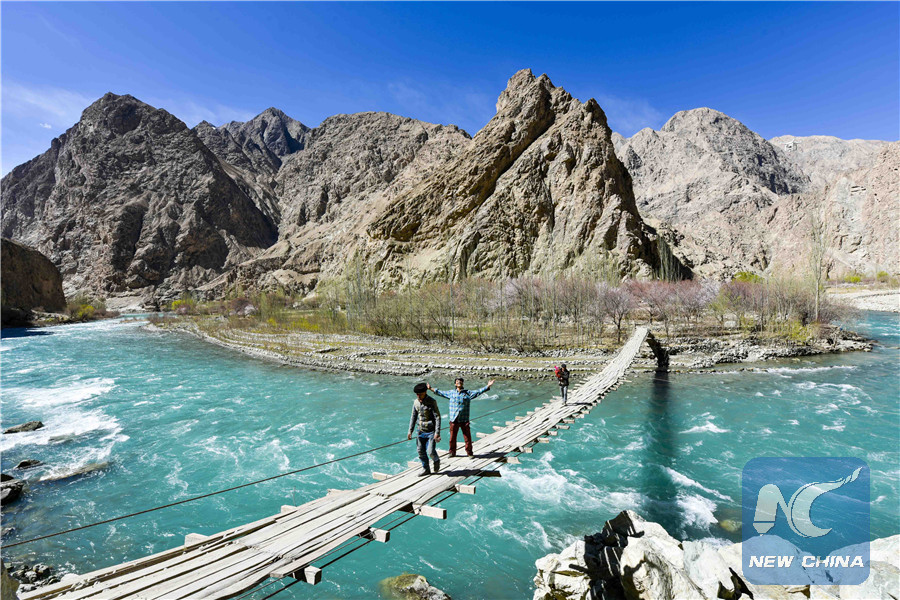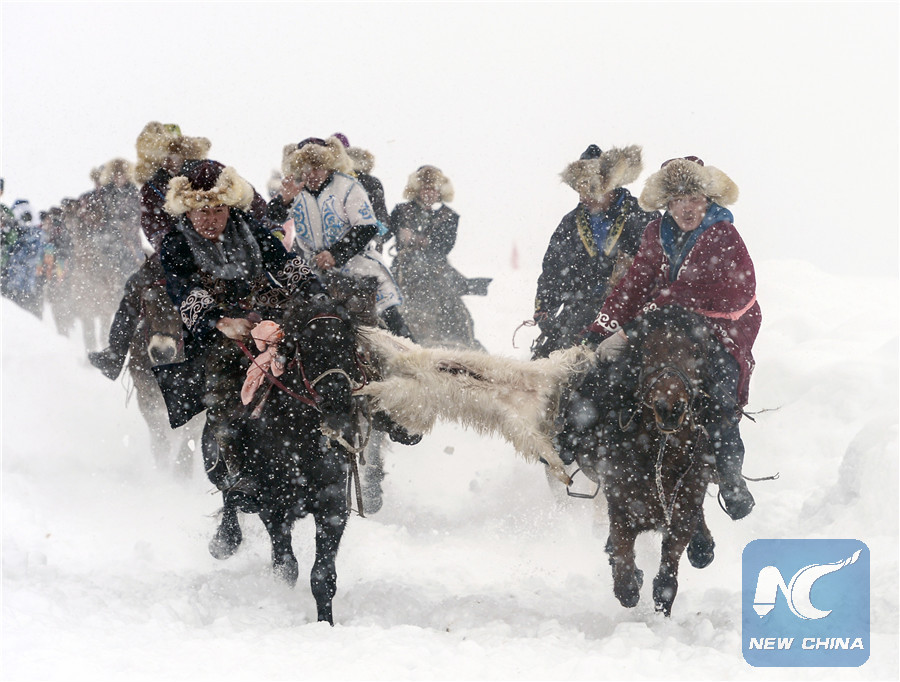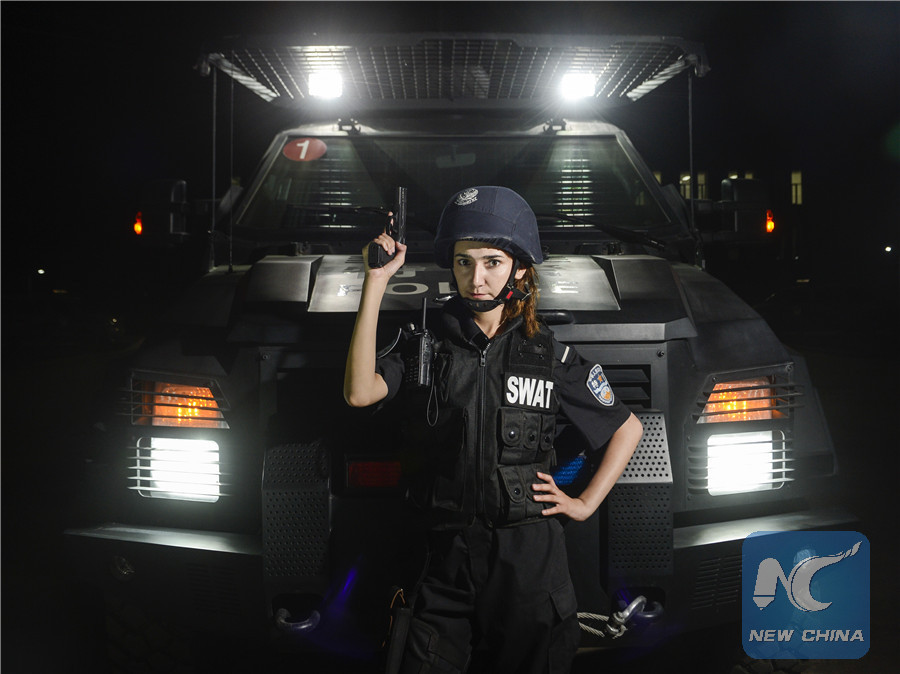
Worker Huang Tingju (R) and her daughter-in-low Wan Lu stand in a lavender field in Huocheng County of Ili, northwest China's Xinjiang Uygur Autonomous Region. Reputed as "China's Lavender Town", the Ili River Valley of Xinjiang now owns a total planting area of 30,000 mu (2,000 hectares) of lavender and produces 95 percent of the country's lavender-related products. (Xinhua/Zhao Ge)
#ChinaQ&A
BEIJING, June 30 (Xinhua) -- Xinhua News Agency is going to open a new special column named #ChinaQ&A on its official Facebook account. The column focuses on a certain topic about China each time. People who are interested in it are welcomed to raise questions and we will select those that are of common concern to answer. Questions that are very personal but really interesting will also be considered. Today's topic is about life in Xinjiang.
Life in Xinjiang
Where is Xinjiang? It is in the northwestern part of China and occupies one sixth of China's whole territory.

Villagers walk on a wooden drawbridge across the Yarkant River, the only way out of a living area, in Datong Township of Taxkorgan Tajik Autonomous County, northwest China's Xinjiang Uygur Autonomous Region, April 1, 2016. Spring has made Datong Township, which locates in the Pamirs Plateau, to be a landscape painting. (Xinhua/Zhao Ge)
What is Xinjiang? Its full name is Xinjiang Uygur Autonomous Region. Actually, it's an habitat of more than 10 ethnic groups, and the Uygur is only one of them. You can also see some foreigners, who do business or study there.
In history, Xinjiang was important in the ancient Silk Road and now in the modern time, Xinjiang is also crucial in the Belt and Road initiative, which includes Silk Road Economic Belt and 21st-Century Maritime Silk Road.

Local people take part in folk games at Hemu Village of Burqin County in northwest China's Xinjiang Uygur Autonomous Region, Jan. 1, 2016. Nearly 1 meter thick of snow fall in the village over the past weeks, making trouble, but also bringing fun to locals and tourists. (Xinhua/Zhao Ge)
Xinjiang boasts amazing landscapes, including Narat Grassland, one of the world's largest grassland; Taklimakan Desert, China's largest desert; Tianshan Mountains, one of the most glamorous mountains in China. And the list can go on and on.

Photo shows a SWAT policewoman from kashgar, Xinjiang. (Xinhua/Zhao Ge)
What is the first word that pops out of your mind when you think of life in Xinjiang? Mosque, herdsmen, fruits, milk tea, naan, bazaars or the Ramadan?

Photo shows how naan, a local staple food, was made in Xinjiang. (Xinhua/Zhao Ge)
Do you have any questions about life in Xinjiang? You can leave your questions as comments here in the post and if you are lucky, we will choose your question to answer.

